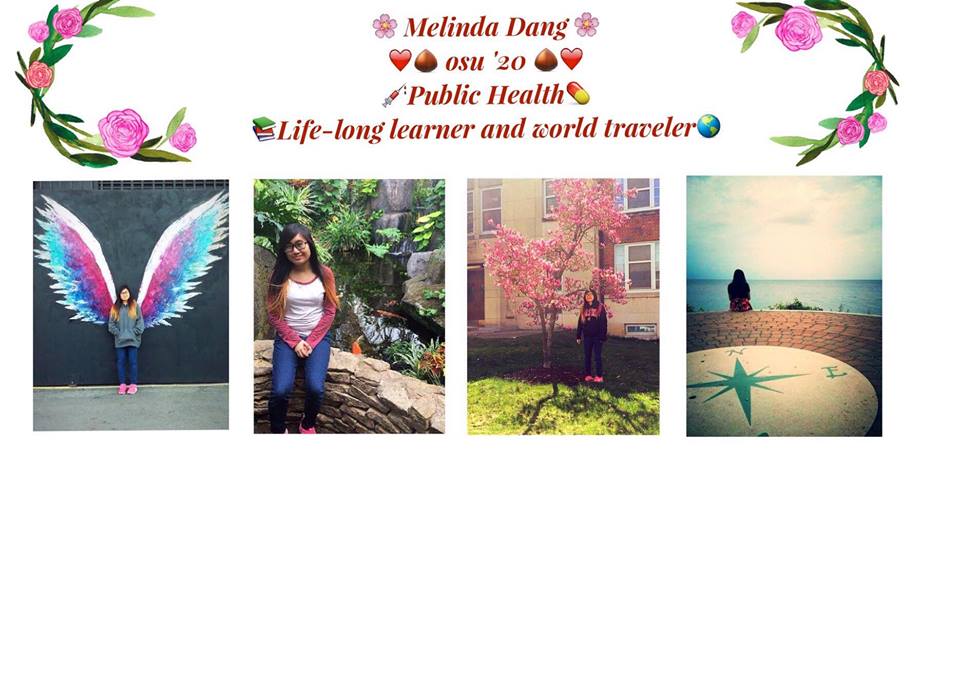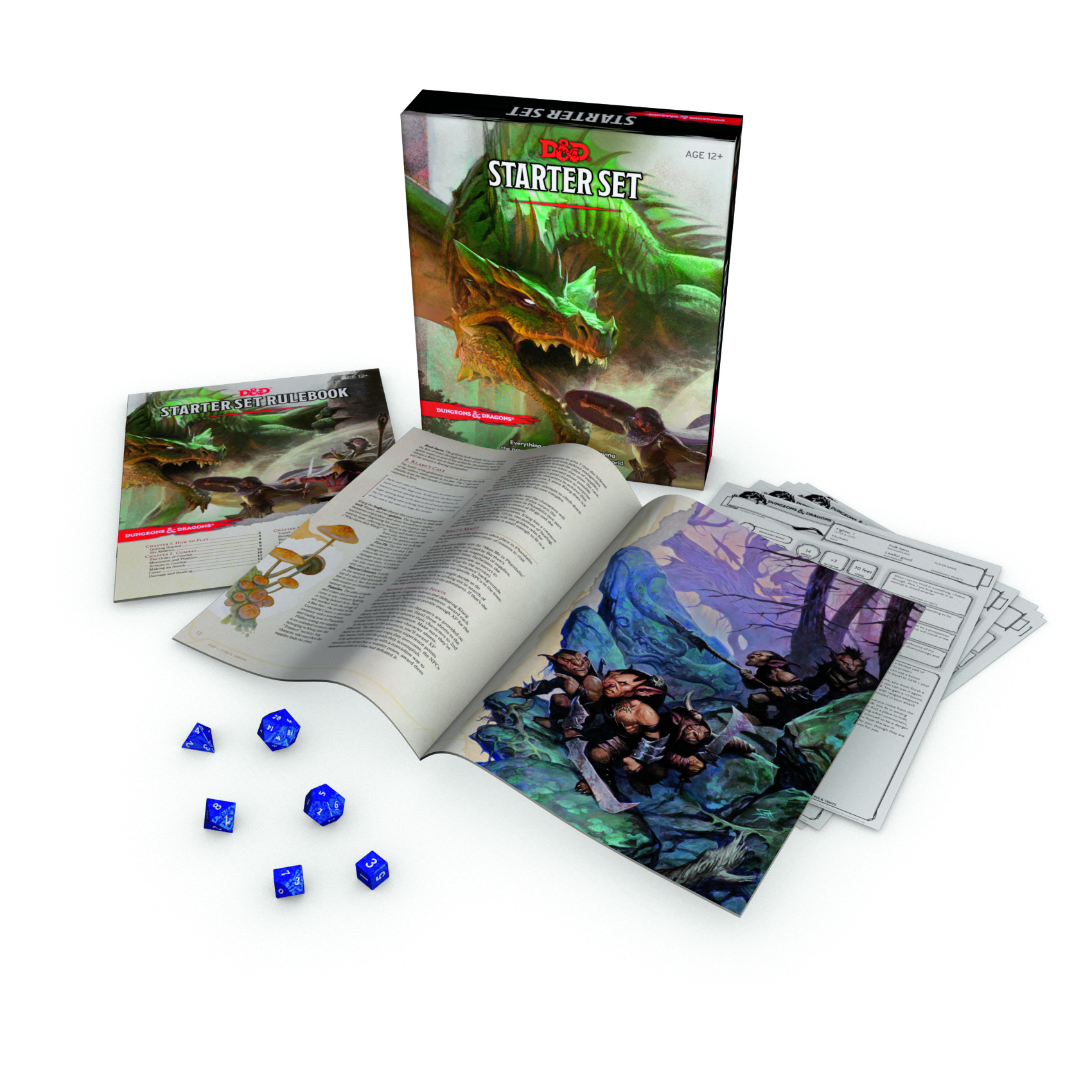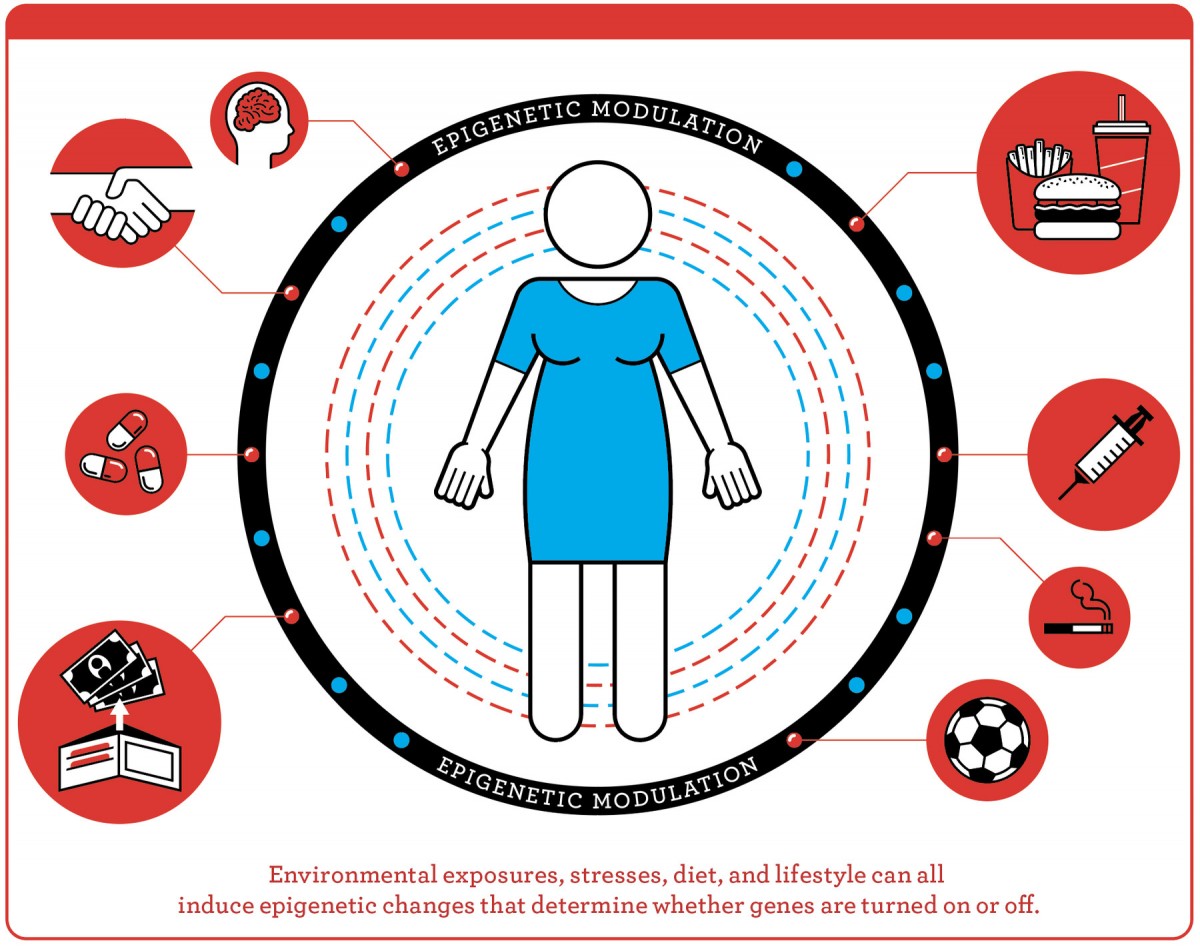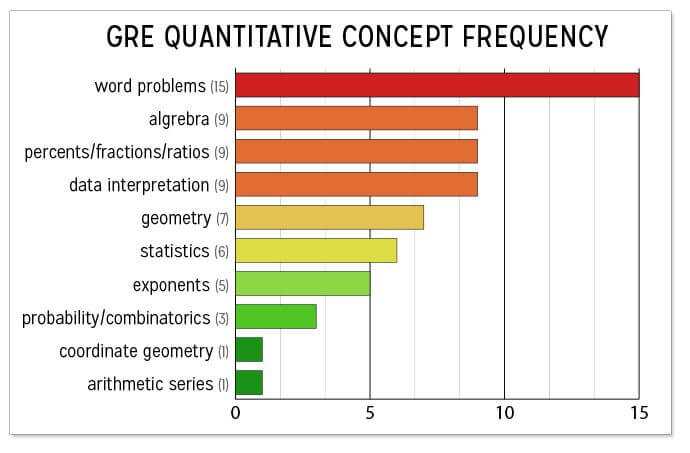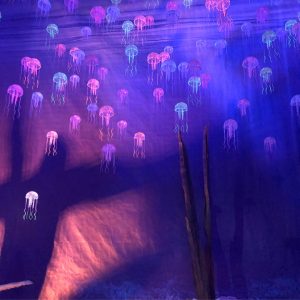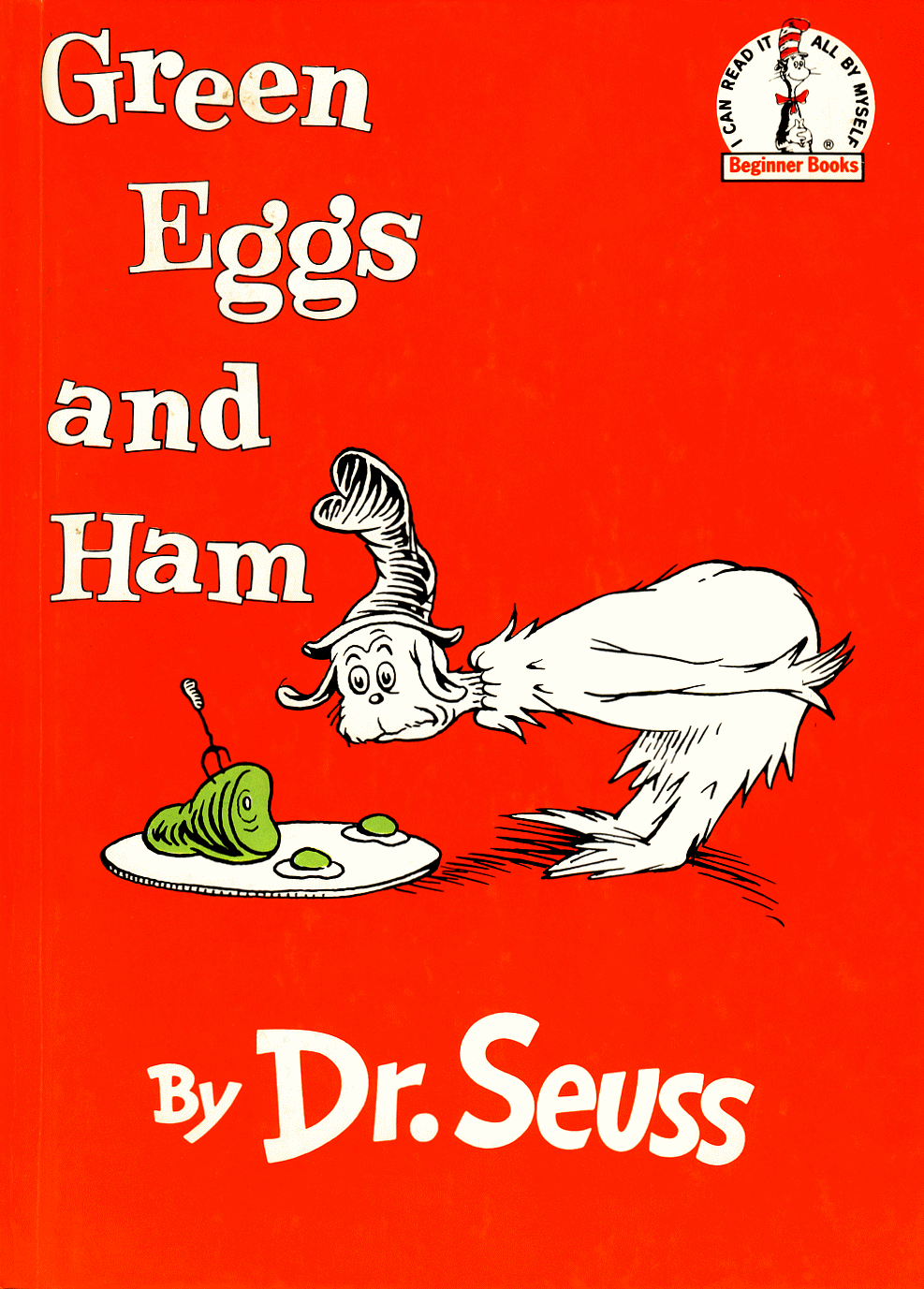On the road again!
Once again, I planned and participated in one of MUNDO’s alternative break experiences! This was yet another ‘education vacation’ and an opportunity for me to see a part of America for the first time in my life. It allowed me to deepen my knowledge about this nation’s history. This spring break 2019, we visited Colonial Williamsburg, VA, Washington, D.C., and Baltimore, Maryland to explore the theme of life, liberty, and the pursuit of happiness. Furthermore, we aimed to explore “Who tells your story?” because there are histories that are commonly known about whereas there are others that are unknown or hidden. Some individuals’ or groups’ histories and stories do not get told fully or even at all. For this spring break, we had a host of different experiences that enhanced our knowledge and challenged us to critically think and inquire. A few of them were visits to the Jamestown Settlement, National Holocaust Museum, and Great Blacks in Wax Museum, and a dinner with Pulitzer-Prize winning author, Wesley Lowery.
Fun Fact: MUNDO first went to D.C. in the spring of 2001. Ever since, the organization has gone back regularly (but not every school year). Each time is a different experience!

I used Canva to create an informational flyer.
The spring break action team held biweekly planning meetings in autumn semester and weekly meetings for spring semester. To be brief about our experiences coordinating the trip, we encountered many roadblocks and hurdles that helped our team strengthen and bond over obstacles. We were able to execute this experience successfully, with 20 participants (16 students and 4 OSU staff members/mentors). MUNDO partnered with the Morrill Scholars Program Learning Community so we had new faces and new perspectives. Our trip was predominantly underclassmen (first- and second-years!)
Here’s the day-to-day run-down:
Monday March 4th
The action team held a 30 minute Pre-Travel Meeting for the participants to attend, unless they had other circumstances that prevented them from coming. We added people to the GroupMe and shared a Google Drive folder with the itinerary, room assignments, and restaurants in D.C. and Williamsburg. In our presentation, we made sure to discuss what people should pack (such as packing layers of clothing to wear), and for specific days, people should wear nicer clothing – ‘snappy casual.’
Friday March 8th
I packed one large suitcase and stuffed my backpack full of items. I was most excited for Washington, D.C. and warmer weather.
Saturday March 9th
I slept about six hours before taking a Lyft to campus. MUNDO has three pick-up locations on campus: Archer House, Drake Performance Center, and the Ohio Union. We have an OSU charter bus throughout spring break, and I stocked four of its cubbies with snacks bought from Kroger. We had quite a stash of food for our participants, including Krispy Kreme donuts, apple sauce, Poptarts, apples, mini oranges, juice boxes, granola bars, chips, and fruit snacks. We also distributed MUNDO drawstring bags to each participant; each bag contained the itinerary and resource guide (with maps and lists of places to eat), a brown paper bag to store food, and Wesley Lowery’s book, They Can’t Kill Us All! Participants were encouraged to read the book on the bus ride since there were hours to spend.

Around 12:30 PM, we were in Lexington, VA and had an hour long rest to eat lunch. A large portion of us went to this restaurant called Cook Out, which has burgers, fries, and shakes, among other items. On the bus ride, I did online homework and was happy to be finished. I also spent time looking at classes for Autumn 2019 semester.
We reached Williamsburg, VA around 4 PM and checked in. We had free time until 6:00 PM when we met up for a group dinner. Dinner consisted of pizza and salad and we talked some more about the itinerary. That evening, I tried some ice cream from Bubba’s Ice Cream Shack just minutes away on foot from our hotel. The ice cream there was a tad expensive, but thankfully we used a buy-one-get-one-free coupon which made it more worthwhile. I had a great sleep at the hotel we were in; the bed was very comfortable.
Sunday March 10th
After an early breakfast at the hotel, we departed for a three-hour guided tour of Colonial Williamsburg. Our guide was named Mr. Drewry. I liked that he was honest and encouraged us to ask questions and challenge him. He was born and raised in the area and said he would spend the rest of his life here. This site is incredibly large that no single person can get through all of it in a day!
Here is the website for this living museum: https://www.colonialwilliamsburg.com/

We were ready for a day of exploration and education!
The group made our way to a silversmith, a jail, some homes, a carpenter’s area, and the Capitol Building. It was an information-packed time. My favorite part was visiting the silversmith. For some reason, I remembered the most from that session. It was interesting to see that people’s coins in the 18th century were literally cut in half to make a half-dollar. Coins could also be cut into fourths and eighths. Silver was also converted into jewelry and household items (spoons, coffee pots, bowls, etc.). A peer asked if people could get sick from using silver spoons for eating and the presenter replied that silver has antimicrobial properties.
I did find that the jails were very unhygienic at that time in history; this was not surprising to me though. Jail cells had poor ventilaton and usually had one window. Inmates would use a blanket to cover the window in the winter to block snow (and sunlight). They would relieve themselves in a corner, but the stench would be strong in the summers and winters.

This was where “the colony’s representatives struggled with the British governor over the meaning of American liberty.”
This tour provided me with greater insights into African Virginians in the early 1700s. Africans made up 52% of the population in Williamsburg. We heard stories of enslaved peoples and their experiences in this area. A salient point I remember is that when an enslaved person was new to the quarters of an estate, the other enslaved people already there would welcome the person in. They shared clothing and tools in crowded conditions. Their meals were simple and made out of one pot. Mr. Drewry, our tour guide, talked about some of his heroes and heroines from the colonial era. Some stories he told were saddening, but there were some that included triumphs and perseverance.
-

-
At this table, people (men) would converse and make important decisions.
-

-
Two colonial actors tended to the garden.
-

-
A silversmith actor explained details of the trade. Silver was a form of currency.
-

-
We learned about carpentry in colonial times. For this log, a person on top would be called a “sawyer.” The worker at the bottom is called a pitter. Guess what Tom Sawyer did for work? Saw logs.
-

-
Our guide took us to various locations around the town.
We took a break for lunch and explored the area on our own afterwards. I took the chance to quickly stop by the College of William and Mary to see what its campus looked like. A small group and I looked at a statue and one building. Since we were hungry for lunch, we left to get food. As we walked to a tavern, we saw a cow on a leash, bulls in a field, and plenty of people walking their dogs in Williamsburg. This was a pet-friendly environment. We found out that Chowning’s Tavern was closed, so we went to Trellis Bar & Grill. After lunch, we browsed in shops. My friend and I strolled through bookstores, a candy shop, and an outdoor festival. I appreciated this free time to explore; I purchased dessert from a festival vendor to support local and small businesses.

This public research university is the second oldest institution for higher education in America. The oldest is Harvard.
I ended the afternoon in Colonial Williamsburg with meandering through the Art Museums. I enjoyed viewing the installations at the Public Hospital for Persons of Insane and Disordered Minds, the first of its kind in British North America. It housed 24 patients and a live-in attendant in a remote area of Williamsburg. At the time, there was a belief that medical intervention in a hospital setting would cure insanity. Since its opening in 1773, mental illness treatment, and our knowledge of it, has transformed during the 18th and 19th centuries.
Seeing this exhibit appealed to me because I study public health and have interests in medical anthropology and history. Approaches to mental illness had a new outlook beginning in the mid-19th century, when caretakers used more optimism and kindness, which was referred to as moral management. Anyone could fall ill to mental illness. The hospital changed rooms to improve patient comfort (and health outcomes). Each patient still had their own room (called apartments) with wooden bed and furniture. The rooms looked more domestic and suitable for humans. The windows and walls were also different in order to give the sense of a welcoming environment. It was unsettling to see how patients were held in previous centuries, but comforting that eventually, medical practices and views changed.

In the early years, hospital cells felt like prison cells. Patients spent most of their times inside and were provided with a straw-filled bed, chamber pot, and blanket. There were no structured activities.
In another area of the museum, I gazed upon examples of American and British antiques and decorative art dating back to the 17th, 18th, and 19th centuries. There were also colonial and contemporary folk art pieces in the galleries.
In the late afternoon, we returned to the hotel for rest. Just a handful of us ate dinner before the evening activity.
In the evening, we embarked on the African American Music Experience, back at the same location, but inside one of its buildings. I did not know what to expect, but this was certainly a nontraditional discovery opportunity! (The NDO part of MUNDO stands for Nontraditional Discovery Opportunity). We stood the entire day and it was very interactive. In the hour or hour and a half we had, we began with singing Funga Alafia, which is a cheerful rhythm about welcoming and blessing. “Greetings I bring to you, ashe, ashe.” That was fun. Then we followed and sang along to other words in different African dialects. Another song I remember was in English and it was called “One Day.” Enslaved folks sung while they worked to keep their morale up and to preserve and pass along cultural traditions. Song and music can help people communicate and express their myriad of feelings, from despair and mourning to hope and encouragement. Additionally, singing along with others can uplift one’s own spirit and help form closer relationships over a shared struggle. We did several different dances and songs. Each of us also had to do our own unique dance which could not be similar to anyone else’s. It was also amazing to see MUNDO participants step up and help make rhythms using instruments like African drums. By the end of the night, we had some lighthearted fun while also learning about the realities of enslavement and how African people survived centuries of slavery and its aftermath and thrived.
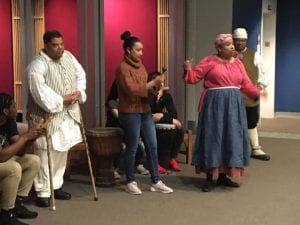
The staff had wonderful voices and helped us sing, dance, and play instruments along with them.
Monday March 11th
We ate breakfast and stored our bags in the charter bus. We had a guided tour of the Jamestown Settlement, America’s first permanent English colony. It is a living history museum with indoor and outdoor displays, as well as replicas of ships and recreations of the original James fort from 1607 and a Powhatan Indian village. Our guide, a retiree and a veteran of two wars named Ali, started us inside the museum to walk us through history of colonization and settlement. We actually know and use Algonquian language without realizing it: the words skunk, raccoon, Potomac, and tomahawk are Algonquian. In addition, many words in everyday English come from Native American languages.

The group witnessed a musketeer firing a rifle. Some of us also tried on musketeer armor and helmets!
To briefly explain Jamestown and its history, from what I took in from our guide, Europeans came over to this land we now call America for economic, religious, and political reasons. Some came to settle to escape persecution, but there were some with insidious intentions who wanted to exploit the rich resources of the land and other negative actions. Some Europeans were colonizers. Building this settlement and building this nation required human, natural, and capital resources. In 1618, the first documented Africans arrived in Virginia for indentured servitude. By the middle of the century, slavery was incorporated. These facts and findings about Jamestown was more eye-opening for me because it added to my knowledge of colonialism, specifically in the context of Virginia.
I enjoyed learning about Powhatan life. Women did farming, harvesting, cooking, and childrearing. Men hunted and fished. Farming accounted for at least half of people’s food supply, but people, including many elementary school visitors, think that hunting is the main source of food for Indians. Something else I learned was Pocahontas’s story and role in saving America. Pocahontas is a nickname given to her by her father because she was his “playful child.” She was an important figure who helped bring peace between the Powhatans and English while she was alive. It is intriguing that she is a popular Native American figure and there are many books, poems, and films about her, including the Disney film. Stories about her can differ and we do not know the entirety of her short life, but I learned much more about her from my visit to Jamestown (and later on, D.C.’s National Museum of the American Indian).
Overall, I really liked the Jamestown tour and how much history and information we were provided. It did not feel like we were being lectured at. Our guide emphasized a few points: 1) each culture is great and valid; no culture is better than the other. 2) We should thank our teachers/educators sincerely because without teachers, society would not function. Teaching is an often underappreciated profession, but teaching helps pass on knowledge to younger generations.

An actor shared with us facts about Powhatan lifestyles in the 17th century.
“The re-created Powhatan Indian village is based on archaeological findings at a site once inhabited by Paspahegh Indians, the Powhatan tribal group closest to Jamestown, and descriptions recorded by English colonists.”
From historyisfun.org
For more information on Jamestown, this summary should suffice:
https://www.historyisfun.org/jamestown-settlement/history-jamestown/
We went on to our next city, Washington, D.C.! Some students take a class trip to D.C. during middle school or high school; this is a phenomenon for Ohio students for some reason. I was supposed to go in eighth grade but it did not end up happening. Perhaps it was because of funding issues, as I attended a public school in a low-income inner-city. I always wondered when I would get to see the nation’s capital, and finally as a 21-year-old, I was able to!
After arriving and checking in, we had the rest of the time to explore. My friends and I walked to the Washington Monument, where we ran into public health Buckeyes, and then we headed to Chinatown. The D.C. Chinatown area is smaller than the ones in NYC and L.A. of course. It also is different in terms of atmosphere and feel compared to my hometown Cleveland’s AsiaTown. For this spot in D.C., many establishments had signs in English letters and Chinese characters. I enjoyed looking at the architecture of buildings and the traditional entrance gate. A group and I had dinner here in a family-owned restaurant called New Big Wong. We got bubble tea afterwards at a Vietnamese-owned cafe that sells banh mi sandwiches and Taiwan-invented bubble tea. It was a good evening.

“Full stomachs and happy hearts” is how I like to describe our dinner.
In the future, I want to delve into the history of this Chinatown because from what I have briefly researched online and noticed in person from walking on the streets, there is some gentrification going on. Apparently, many people of Chinese descent have been driven out of this historic area. Gentrification is not a new occurrence for communities of color, and as someone who is passionate about sociology and social justice, I want to examine this issue and its effects.
For more information on Chinatown:
https://www.tripsavvy.com/chinatown-washington-dc-neighborhood-guide-1039373
Tuesday March 12th
The D.C. hotel does not provide breakfast, so we are responsible for finding food ourselves. I tried to eat leftovers of my beef chow fun, a Cantonese Chinese dish, but I wish I had eaten more filling and nutritious food as well. In the morning, our group walked together to the Smithsonian Castle, home to the Smithsonian Visitor Center. This is a good stop to get oriented to the Smithsonian museum complex. It is the world’s largest museum, education, and research complex. I learned about the history of the museum and how an Englishman named James Smithson founded the Institute to promote and diffuse knowledge and learning around in America.

Smithsonian Castle. Source: smithsonianmag.com
A few friends and I had a small window of time to wander the halls of the Freer Art Gallery. We only had 20-25 minutes to look around, and part of the time, we spent in the gift shop. I did not get to go back to this art gallery later in the week for its exhibits and gift shop. However, I saw Asian art pieces when I was there. In particular, I saw Buddhist and Hindu ancient art and shrines. It would be nice to visit D.C. again to get to the museums and art galleries I did not get to the first time I was in the city.
Information on the Institute: https://www.si.edu/Museums/smithsonian-institution-building
Our MUNDO group visited the National Holocaust Museum. This was self-guided, so we went at our own pace. I have been to a holocaust museum in Cleveland and Los Angeles, and now this one in D.C., where I learned even more about the genocide. I had a card with the name and photo of a young girl; as I progressed through the museum, I learned what happened to her and her family. She did not make it out of the Holocaust alive, and perished in a camp.
I took photos of many of the walls that had text descriptions on them. A few facts I want to share are:
– By 1939, there were less havens available for Jewish refugees. Latin American countries took in around 39,600 Jewish people, and 15,000 people found safety in Shanghai. In October 1941, emigrating out of Nazi Germany was forbidden. It was upsetting that America did not let in as many refugees as they could have, in part because of anti-immigration sentiment.
– Some Jewish children who were sick and hospitalized were killed by starvation, lethal injections, or overdoses of medicine. About 30 institutions carried this heinous practices out, intentionally harming instead of helping. These “special children’s wards” were also places where any youth with disabilities, mental or physical, were killed. German physicians carried out Operation T4 to eradicate the Jewish people and preserve genetic impurity. Learning of this was atrocious to me; it was especially horrific hearing how children were treated.

Here are hundreds of photos of people in a Jewish community in Eishishok, in what is now Lithuania. These are from 1890 to 1941.
In the museum there is also an exhibit about the systemic killings occurring in Syria since 2011. This is the greatest humanitarian crisis since World War II. Half of Syria’s population, 11 million, have fled. While I have heard about this crisis in the news, I have not done much thorough investigation of my own. It feels removed from me for some reason, and I know that I should do something like educate myself and/or donate. I should share this information so that we do not turn a blind eye to this issue of human rights as well.
Here is the website for the museum: https://www.ushmm.org/
After the National Holocaust Museum, I went straight to another museum, which also dealt with heavy history: The National Museum of African American History. I spent a few hours here, and was not able to read every detail. I learned a lot here as well. The museum began in the basement, where we were introduced to Africa in the 1400s. Slavery was not yet based on perceptions of race and it was a temporary status. People traded gold, salt, and spices. Later on, the concept of whiteness developed, along with other races to categorize people and ascribe characteristics to them. Race was also a factor in determining freedom, like in the case of John Punch. He and two European servants tried to run away but were caught and trialed. The white indentured servants had added-on time for their service, but Punch was sentenced to a life of enslavement. This was unbelievable.

This exterior design resembles a golden basket to me.
In addition to the exhibits on slavery, I found this learning center fascinating. There were interactive stations and I engaged with one of them, where I learned how people find artifacts in the deep Atlantic Ocean to help us uncover some more of the story of the slave trade. On other museum floors, I saw African American music and art, and how those influenced our world to this day. African Americans have made so many contributions to society and are an integral part of our history. This was not the first African American history museum I have been to; the first one was in Detroit, but this one was the largest! You can spend a whole day here if you want to devote intense interest to the museum.
I liked a quote on the wall: “The great force of history comes from the fact that we carry it with us, are unconsciously controlled by it… History is literally present in all that we do.” – James Baldwin
This quote will stick with me, since I hold history to be so important and necessary in understanding the world around me. From the museum’s food court, I enjoyed delicious, soul-soothing mac and cheese and corn bread. I recommend these two items! After that, I returned to the hotel for a quick rest.
MUNDO attended a Shear Madness performance at the Kennedy Center. I was in charge of booking seats for this murder comedy show. We had to keep contacting the center to update them on how many seats to reserve. I liked the show as it was interactive and funny, and I liked how they used retro colors and styles. It was similar to the movie Clue. During the intermission, we were able to talk to the performers to try to figure out who committed the crime. The performance was a nice way to end the night.
Wednesday March 13th
We completed service in the morning at A Wider Circle, in Silver Spring, Maryland.
-
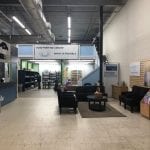
-
This was the main building where we entered. There are children’s books and toys, household linens, furniture, and clothing for people.
-

-
The organization wants to end poverty in this country. They use a neighborhood partnership model so that different members of the community contribute to each other’s success and basic needs.
-

-
I took on the task of organizing the many shoes in the loft area of their professional development section. People can set up appointments to get a stylist’s help in choosing outfits.
Our group spent about three hours with this organization, and I really enjoyed volunteering here to help with organizing the different sections. Some people worked on making furniture and glass look polished and like new. Other people sorted out donations and even unloaded furniture from a truck. Those in the workforce development room worked on tidying up the areas and sorting belts, clothing, and shoes in preparation for a major event. Later, some of us examined puzzle boxes from the children’s section and counted the number of puzzle pieces in each box to make sure nothing was missing. This was all a fun experience for me. I learned about this great community-based organization that wants to continue growing and offering all that it can to support anyone in need.
They help people make houses or apartments into homes, help secure jobs and look good for the workforce, and help families make the most of what they have.
Expand your mind and expand your efforts at http://awidercircle.org/
The next group activity was our tour of the Capitol!

Our tour guide was engaging and charismatic. She was open to all of our questions. She, like many people in D.C. in her words, is not from the area.

MUNDO had to do an OH-IO in front of the Capitol building!
While the architecture of the Capitol was gorgeous and impeccable, there was one room with many paintings and sculptures that made us think deeper into the art. No enslaved peoples were in any of the art in the room. There were a few Native Americans and these depictions were often racist as they painted these indigenous Americans as non-human/sub-human. There was a large painting of Pocahontas being baptized and becoming “white” or “acceptable.” Her true story rarely gets told, and I wonder why this is the case. Congress has the ability to change out these paintings and commission new ones that can tell the story of America better, and bring justice to the lives of Native Americans and African/African Americans as well as other people of color who built this stolen nation.
-

-
The building was done in a neoclassical style.
-

-
For more information on the architecture of the Capitol, see here: https://www.aoc.gov/us-capitol-building
Our tour ended at 4:30 PM and we were free until 6:15 PM, when we had to be back at the hotel. I rushed to the U.S. Botanic Garden, an attraction on my bucket list. When I finally made my way into the building, I had about 10 minutes to zoom through its galleries and set my eyes on the lush vegetation and landscapes. A peer took photos of me before we were asked to leave. I’d love to return in the summer when everything is in bloom.
In the evening, MUNDO had a group dinner with Ohio State alumni at Harriet’s, a family-style restaurant inside of our hotel.
-

-
At the main table, we had Javi, who worked in Residence Life at OSU before moving to D.C. He attended the NYC winter break 2017 experience with MUNDO.
-

-
We had Marvin at the other table. He has also worked with MUNDO in the past to create transformative experiences for students.
Thursday March 14th
This was a free day for MUNDO participants. I spent time with friends eating breakfast at a café called Abe’s Café (there are two locations). We stayed there for a while to work on homework and applications. I finished a study abroad scholarship application and had a friend look it over. We then went to Smithsonian museums of our choice! First up was the Library of Congress. Three of us went to get our library cards! The rooms of the library were marvelous. If I lived in D.C., I would check out some books and study in that library. What a great resource for people who want to learn and research any topic of choice.

My friend Kayla snapped this shot of me on this sunny day of exploration.
Then one friend and I explored the National Museum of the American Indian. Prior to this, I had never been to a museum dedicated towards Native American history and heritage. I was very thankful that this museum existed to educate people and celebrate the many diverse cultures and traditions of different Native groups.
Did you know? About 60% of the world’s diet today is derived from Native American foods, such as potatoes, chilies, tomatoes, and chocolate! Native Americans also grew a variety of food together, which is called biodiversity and lead to healthier crops. European colonists, on the other hand, used monocultures, which is not the most beneficial for agriculture.

This museum offers information and artifacts about American Indians in the Western Hemisphere of the world.
https://americanindian.si.edu/about
My friend and I witnessed a Native American man perform a song he wrote; he is a scholar and artist. This performance was a nontraditional discovery opportunity, and he opened the floor to questions from the audience: three from children and three from adults. We explored the museum and learned of different communities and their ways of life. I learned how different groups perceived their universes. We looked at the:
Pueblo of Santa Clara (New Mexico)
Anishinaabe (Canada)
Lakota (South Dakota)
Quechua (Peru)
Hupa (California)
Q’eq’chi’ Maya (Guatemala)
Mapuche (Chile)
Yup’ik (Alaska)
It is our duty to pass these teachings on to succeeding generations
For that is the way to keep our traditions alive
Emil Her Many Horses, NMAI, 2003
These exhibits, including the introductory video NMAI suggests you watch on the top floor, was eye-opening for me and helped me gain a greater appreciation for Native Americans and their legacies. I would not have gotten all of this information and insight elsewhere. I strongly believe that all school curricula should have comprehensive sections on Native Americans and their experiences. I remember learning about them in second grade and fifth grade. As an adult, I have a more nuanced understanding of the complex histories. I still want to learn more and one way I can do this is to find books and works from indigenous scholars themselves.

I had an Indian taco from the food court. It had buffalo chili, which tasted like normal chili to me. I paired the meal with a refreshing agua fresca.
Afterwards, I checked out the NMAI gift shop and debated on what to get from there. Leaving empty-handed except for educational pamphlets, we embarked for the National Portrait Gallery. According to the gallery curators, it is a place for our nation’s stories to be told. The arts are a window to our history. The first major sculpture my friends and I saw was the dying Tecumseh, a key player in the Indian resistance to America’s expansion into the Midwest. We saw portraits and sculptures of important figures who played a role in shaping America. I was more interested in figures who are alive today, although everyone is important. I especially liked the most up-to-date exhibit. In particular, Michelle Obama’s and Barack Obama’s portraits were absolutely outstanding. This art gallery had pieces related to responses to the Vietnam War, the Civil Rights Movement, and other events. It is a very interesting gallery aimed to provoke emotion and thought.

The artist displayed on the TV screens what he associated with each state.
The last part of the day was spent having dinner and conversation with Mr. Wesley Lowery, a journalist at The Washington Post. We ate at Ollie’s Trolley, around the block from the hotel. It was a fantastic opportunity to hear from him and his upbringing in Ohio and his experiences as a journalist fighting for justice. According to his biography, he was a lead on the Post’s “Fatal Force” project that won the Pulitzer Prize for National Reporting in 2016 as well as the author of They Can’t Kill Us All: Ferguson, Baltimore, and a New Era in America’s Racial Justice Movement. In 2017, he became a CNN political contributor.
Mr. Lowery went to Ohio University with a MUNDO staff mentor, who helped us connect with Lowery and coordinate this meeting. For about an hour and a half, we had his presence. He explained to us how he had always known he would pursue journalism. It was an enlightening conversation. We asked him questions during dinner as well as afterward. I still struggle with coming up with questions to ask guests. It is something I need to work on. I also read a little bit of his book, but not all of it. It is on my to-do list.
For the rest of the night, a few peers and I looked around in the H&M store down the street from us. We tried on clothes and had fun. That was it for the night. I knew I should turn in at a reasonable time to get sufficient sleep, and for the most part, I have slept fine in Hotel Harrington.

Ollie’s burgers are good. The fries are seasoned with 27 spices, they boast! Sadly I could not try one of their shakes; the machine broke right before it got to me.
Friday March 15th
We had a free morning to do our final exploration of D.C.. I got to visit Palmer Alley, which had beautiful pink lanterns to celebrate cherry blossom season. This is a great spot for photographs! Also, this spot is pretty close to Chinatown. I wanted to see more art installations and murals around, but I did not want to go alone to these spots, and there was a limited amount of time.

In the summer, the lanterns get switched out for beach balls.
At 2:15 PM, we met up for an afternoon walking tour. MUNDO walked all the way to the Tidal Basin, and around it, we met with our guide. We started at the Franklin Delano Roosevelt Memorial and then made our way to the Korean War Memorial, Lincoln Memorial, Martin Luther King Jr. Memorial, and Vietnam War Memorial. This was an interesting tour with tons of tidbits of facts. Many people were touring the area and looking at the memorials.


On the steps of the Lincoln Memorial, we took a nice photo. 10 students and one MUNDO advisor are in the photo!
We had the evening free to ourselves after the tour. I met up with a friend from the summer research program I did in summer 2018! I am fortunate that she lives and goes to school in the DC area, and her spring break had just started as mine was coming to a close. We went to Ricebar for dinner, where we caught up over our meal, and then walked to The Wharf at the suggestion of my friends. At the Wharf, there’s a substantial amount of seafood sold, which is not surprising. Then there are restaurants and bars all around. I want to return here as well. If we had walked all the way down its boardwalk, we would have seen the giant swings that my friends got to go on. My friend and I went to get red velvet cupcakes and we ended the night. It is hard to find cheap desserts in DC. The cupcakes were $3 or so, which is not too bad because they were quite tasty and rich.
(For the week in DC, I gave myself an allowance of $200 to spend on food and souvenirs. A month later at the time of this posting, I still have not checked exactly how much I spent. I know I saved a significant amount of money by using an app where certain dishes from restaurants were $1 and I had credit on the app so I was getting free meals once a day! The app is called Ritual.)
Saturday March 16th
We had an early breakfast before checking out and storing our bags on the bus. At 8:00 AM, we departed for Baltimore, Maryland for a tour of the Great Blacks in Wax Museum. I believe this was my first time going to a wax museum. (There were a lot of ‘firsts’ for me on this trip). This museum was certainly unique and unforgettable, as it presented Black individuals in life-size dimensions, and they were quite realistic. There was so much to this museum. We began with the slave trade and I learned more pieces to the story. My knowledge of the world is constantly expanding. It was such an experience to see the figures accompanied with text to explain the context.
I saw so many important figures, some of whom I learned about in elementary school during African American History Month. My school’s library teacher taught me the most about civil rights and social justice. She taught me lessons that I take with me to this very day. Educators like her have inspired me in ways that I cannot express verbally. All over the museum were African Americans as pioneers in fields where nobody looked like them, as warriors and fighters in the midst of tumultuous times, as dissenters and activists to get their rights. There were many people I was unaware about, and this filled I recommend this museum too. My favorite part was seeing the wax figure of Barack Obama and the poems that people wrote about him.
Here is more about the museum: http://www.greatblacksinwax.org/index.html
We had lunch in the Baltimore Inner Harbor before continuing on the long journey back to Columbus, Ohio.
The inner harbor is a historic seaport, tourist attraction, and landmark for the city of Baltimore. My small group of friends ate at Shake Shack. We were originally going to eat at Cheesecake Factory but our party of seven would have had to wait 45 minutes before sitting down. After eating, we perused Barnes & Noble. I also want to return to this harbor to try out the dragon boats available for tourists! I’ve rowed a boat before in Finland, but I want to try a boat here in America. We had a short time in the Harbor. I wanted to finish this blog on the bus ride, but slept for several hours. Surprisingly, by 7 PM, MUNDO reached The Ohio State University’s campus! I was happy we had gotten back before it was dark outside. Even more so, I was relieved that this experience was successful.

Source: Baltimore.org
REFLECTION
This experience was the most stressful to plan to this date. The frustrating aspects of planning were the government shutdown making us wonder about how we would adjust our agenda, participant recruitment, participants canceling, and museum and tour bookings. Since our group’s number of participants changed constantly, it was difficult to give museums and service sites an exact count. Being an action team member has sharpened my skills in patience, public speaking, problem solving, communicating, planning, budgeting, and email etiquette. I also helped facilitate Monday MUNDO meetings that connect and contribute to the themes of our experience. Furthermore, I was the administrator for the group’s GroupMe, where we communicate with each other. I put in reminders for where the group had to be and what they had to do for each activity. Additionally, I am pleased that we had a smaller-sized group because it was easier for us to fit into spaces and navigate museums. We got to know each other better as well. We discussed heavy and controversial topics and found common ground. My peers are very admirable and interesting.
I look forward to planning and participating in more MUNDO experiences. For the 2019-2020 school year, MUNDO is going to New York City for fall break, Los Angeles for winter break, and Charleston, South Carolina; Atlanta, Georgia; and Savannah, Georgia for spring break. I would like to be a part of the Action Team for both winter and spring breaks to continue to create meaningful experiences and further explore the country.
Tune in next year when I serve, learn, and lead even more with my beloved student organization, MUNDO!







